Author: Steve Crum
TRUE BUT STRANGE: See here, Bret Maverick!
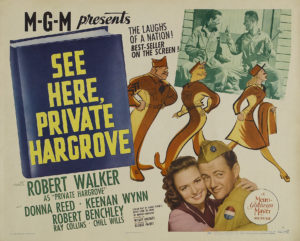
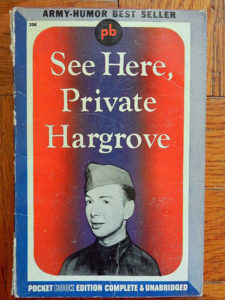 By Steve Crum
By Steve Crum
MARION HARGROVE (1919-2003) was quite a writer, having first written the best selling book See Here, Private Hargrove in 1942, an oft times hilarious account of his experiences as an Army soldier during WWII. It was such a sensation that MGM produced a 1944 hit movie of the same title, based on Hargrove’s book. Robert Walker was cast as Hargrove. There was even a sequel, What Next, Corporal Hargrove?—also starring Walker—in 1945. (TCM frequently airs both movies.)
After the war, Marion Hargrove made a living writing feature stories for magazines, including a stint as Feature Editor of Argosy magazine. This branched out to writing scripts for movies (Cash McCall, The Music Man) and TV shows: The Restless Gun, The Waltons, Colt .45, The Magician, The Rounders, and the pilot episode of 77 Sunset Strip.
Notable in his itinerary are the nine scripts he wrote for the classic TV comedy-western series, Maverick, starring James Garner as Bret Maverick. Most remembered is his script for “Gun-Shy,” a parody of the very popular TV western, Gunsmoke. Not only was Gunsmoke a CBS show, while Maverick was on ABC, but “Gun-Shy” lampooned the major characters and overall premise. This cross-network ribbing was unheard of then.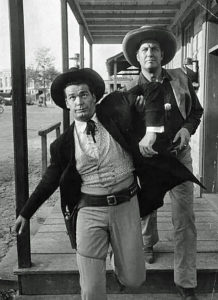
Instead of Marshal Matt Dillon, Hargrove renamed him Marshal Mort Dooley, making him a tall and not overly bright hero. Dillon’s deputy Chester Goode became Clyde Diefendorfer. Doc Adams morphed into Doc Stucke. (Incidentally, Chester’s last name on the radio version of Gunsmoke was Proudfoot.)
The plot involves Bret Maverick wandering into Elwood, Kansas (a Dodge City takeoff), and running afoul of the town marshal. Marion Hargrove even wrote in a reference to Richard Boone’s Paladin character from Have Gun Will Travel, another popular western series of that time.
Maverick remains one of the best western series of all time, thanks in part to Marion Hargrove’s witty contributions.
Must-have 1941 concert for Greek Relief CD showcases America’s greatest popular composers, singers, comedians
NOTE: Following is a review I wrote several years ago for Amazon, praising a double-CD set containing a rarely heard 1941 concert for Greek Relief. The CD is still available on Amazon—and perhaps other sites, but it has been out of print for some time. It can be purchased through other Amazon merchants, and is a gotta-have for the definitive vintage show business aficionado.
=====
 By Steve Crum
By Steve Crum
Deep in my heart the melody lingers, and the song never ends. That is why this marvelous double CD set produced by Brian Gari, Legends and Songwriters in Concert 1941, appeals to me. It will also connect with any lover of the American popular song.
The 45 tracks represent a spectrum of song hits beginning in the teens of the 1900s. As the title suggests, this is a concert–a rarely heard concert even in its time. Taken from what was thought to be lost discs, the Feb. 25, 1941 Greek Relief Fund evening features not only the songs, but the composers. (Many died within a few years of this recording.) Some sing their own creations (always a joy, even when they cannot sustain all the notes), and some accompany other singers via a piano or play solo piano.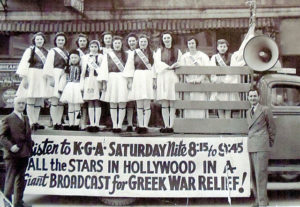
The war in Europe was festering. Pearl Harbor was only months away. So this precious two hours and 20 minutes
recording exists as a history bookmark–an extremely entertaining one. There are patriotic songs (Tony Martin belts out a very mean and stirring “God Bless America” at the conclusion–nearly equaling Kate Smith’s final note); and there are references to the Greek resistance effort against the Axis in a special lyric that Bob Hope sings via “Thanks for the Memory.”
Performed at the Shrine Auditorium in Los Angeles and broadcast on radio only to West Coast listeners, this 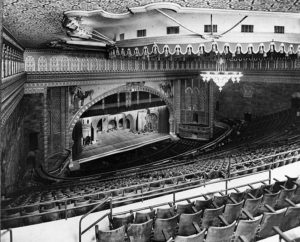 extravaganza includes some of the great entertainers of all time. There is Jack Benny (playing his theme song “Love in Bloom” on the violin–a complete version played straight and gorgeously); a young Judy Garland (singing “Over the Rainbow” with its composer Harold Arlen on piano and David Rose conducting the orchestra–to a thunderous ovation); composer Hoagy Carmichael singing what many still consider the greatest pop song ever written, “Star Dust”; and Eddie Cantor, CD producer Brian Gari’s grandfather, singing his immortal “Makin’ Whoopee” as songsmith Walter Donaldson accompanies him on piano.
extravaganza includes some of the great entertainers of all time. There is Jack Benny (playing his theme song “Love in Bloom” on the violin–a complete version played straight and gorgeously); a young Judy Garland (singing “Over the Rainbow” with its composer Harold Arlen on piano and David Rose conducting the orchestra–to a thunderous ovation); composer Hoagy Carmichael singing what many still consider the greatest pop song ever written, “Star Dust”; and Eddie Cantor, CD producer Brian Gari’s grandfather, singing his immortal “Makin’ Whoopee” as songsmith Walter Donaldson accompanies him on piano.
This is one honey of a CD set. The live performance includes numerous fluffs, including Dinah Shore having to restart “South American Way” several times, and Bob Hope coming back for curtain calls twice, even though he is told on air that the show is running late. Sound quality is monaural, no surprise, and there are a few clicks and scratches due to the condition of the original discs. But such imperfections are minor.
On with the plus factors:
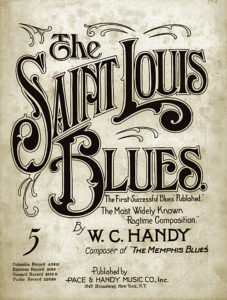 *”St. Louis Blues”–performed by the composer, W.C. Handy, on trumpet.
*”St. Louis Blues”–performed by the composer, W.C. Handy, on trumpet.
*”Smoke Gets in Your Eyes”–Jerome Kern plays the piano, backed by full orchestra. (The orchestra, conducted by either David Rose or Alfred Newman, assists most of the artists.)
*”Lover, Come Back to Me”–played by Sigmund Romberg, the composer, along with a medley of his hits.
*”Indian Love Call”–Rudolf Friml on piano.
*”You Made Me Love You”–played and sung by its soulful and warbly-voiced creator, Jimmy Monaco. 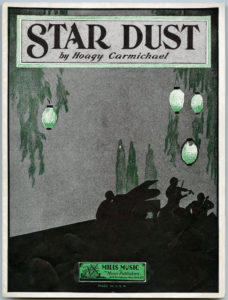
*”My Heart Belongs to Daddy”–Mary Martin sings her signature song with writer Cole Porter on piano.
*”My Buddy”–Remember the wonderful Frances Langford? She sings a wrenching version as composer Walter
Donaldson accompanies.
Perhaps the surprise of the show opens the program. Albert Von Tilzer might be a forgotten song writer, but he sings his own all-time hit that will always be remembered: “Take Me Out to the Ballgame.” Wait until you hear its seldom sung verse.
Pardon me as I listen again.
=====
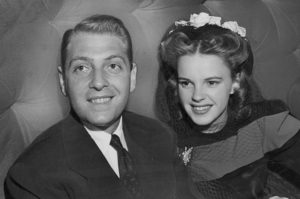 Epilogue: At the time of this concert, David Rose was married to Martha Raye. They divorced on May 19, 1941. Two months later, July 28, he married Judy Garland. They divorced in 1944. This was the first of five marriages for Garland.
Epilogue: At the time of this concert, David Rose was married to Martha Raye. They divorced on May 19, 1941. Two months later, July 28, he married Judy Garland. They divorced in 1944. This was the first of five marriages for Garland.
WORTH 1,000 WORDS: Flo, The Ziegfeld Girls & Billie
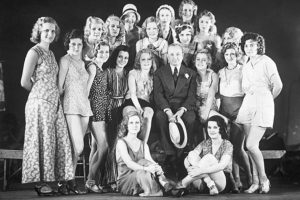 By Steve Crum
By Steve Crum
The great Broadway impresario Florenz Ziegfeld (1867-1932) poses with a bevy of his gorgeous and talented showgirls aka “Ziegfeld Girls” in 1931. His Ziegfeld extravaganzas packed in New York City theatre goers from 1907-31.
Rumors persist that “Ziggy” personally “interviewed” each and every young lady who auditioned for his chorus lines. Call it the “Ziegfeld Scandals.” Call it the “Ziegfeld Casting Couch.” That includes the 1914-32 years Ziggy was married to Billie Burke. If her name does not ring the proverbial bell, her most famous role undoubtedly will. Billie portrayed Glinda the Good Witch of the South in The Wizard of Oz (1939).
For love of guns via the mass media
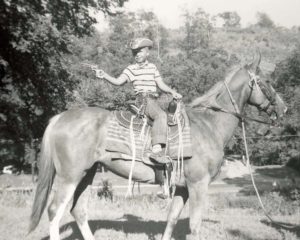 By Steve Crum
By Steve Crum
There is a silent, 8mm home movie of me as a toddler in 1952, wearing a specially made double holster with silver studs and fancy cap guns, patterned after Hopalong Cassidy’s six-shooters. My Grandpa Axtell was a western fan, and paid to have the holster constructed. That holster lasted for several years, until I ran out of belt holes as my body grew up and out. 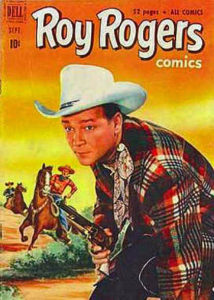
I was still wearing it when the photo here was taken of me on Grandpa’s horse.
From the moment I could barely walk, I was exposed to black and white TV westerns—like virtually every other kid in the country. Cowboy heroes dominated the tube from the late 1940s (the dawn of TV) through the ‘60s. Reruns of William Boyd’s 66 Hoppy movies produced in the 1930s and ‘40s made Boyd and his Hopalong character THE biggest stars of early TV. He was the man who dressed in black, rode a white horse (Topper), and sported a silver-studded, double holster. Boyd then starred in half hour episodes made for the new medium. Gene Autry and Roy Rogers joined Boyd with their own made-for-TV series. Their old movies were also rerun. “The western march had just begun,” as television’s Davy Crockett theme said in 1955. Autry’s production company also gave us new western heroes like Annie Oakley, The Range Rider, and even Champion (Gene’s horse).
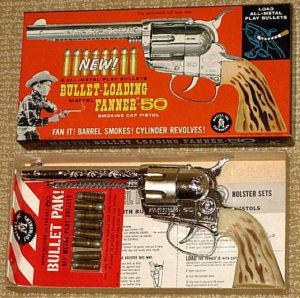 Movie theaters downtown and at drive-ins were western crazy too, with the likes of John Wayne, Randolph Scott, and James Stewart. All my neighborhood’s boys emulated their cowboy heroes as we spent summers playing cowboys vs Indians, and good cowboys vs bad cowboys. Toy cap guns, sold in every dime store, were essential. And nearly every hit TV western hero was merchandized, taking the cue from William Boyd. Carrying a cast iron and plastic toy gun loaded with a roll of caps was the norm. There were The Rifleman’s rifle, Wanted Dead or Alive’s “mare’s leg” sawed-off rifle, The Lone Ranger’s pistol, Wyatt Earp’s long-barreled Buntline Special, and dozens more. At the western genre’s peak in popularity during 1959, there were no less than 30 western series broadcast each week. Twelve years later, the cowboy craze had nearly disappeared into the sunset.
Movie theaters downtown and at drive-ins were western crazy too, with the likes of John Wayne, Randolph Scott, and James Stewart. All my neighborhood’s boys emulated their cowboy heroes as we spent summers playing cowboys vs Indians, and good cowboys vs bad cowboys. Toy cap guns, sold in every dime store, were essential. And nearly every hit TV western hero was merchandized, taking the cue from William Boyd. Carrying a cast iron and plastic toy gun loaded with a roll of caps was the norm. There were The Rifleman’s rifle, Wanted Dead or Alive’s “mare’s leg” sawed-off rifle, The Lone Ranger’s pistol, Wyatt Earp’s long-barreled Buntline Special, and dozens more. At the western genre’s peak in popularity during 1959, there were no less than 30 western series broadcast each week. Twelve years later, the cowboy craze had nearly disappeared into the sunset.
MILITARY FANTASIES
Heroics were not exclusive to cowboys. John Wayne portrayed both a cowboy and a military hero (particularly Army and Marines) in his most popular movies. While I never dressed up like a soldier to play military battles, I did fantasize about the heroism of soldiers during WWII. Among my collected comic books were Sgt. Rock’s Our Army at War. The machine guns and tanks were particularly thrilling.
The back page of most comic books was nearly always an advertisement for magic tricks, selling greeting cards, or buying one’s own set of fighting soldiers. I bit on one of the latter ads, after saving my allowance for over a month to buy a “foot locker” packed with soldiers holding their 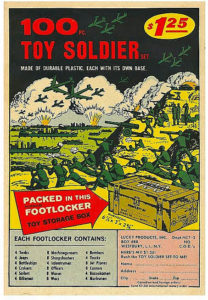 rifles and pistols. When I finally received the package, I discovered the foot locker was about the size of a Cracker Jack box, and the soldiers were tiny, flat-sided, brittle plastic things that kind of resembled soldiers. Standing them upright was a challenge. G. I. Joe dolls were prevalent around this time, as well as Aurora plastic model kits of military tanks, cannons, armed soldiers, etc. Some of my pals had them, but I did not. There were even plastic toy hand grenades that required a “stick ‘em” cap to be inserted, and would sound with a bang upon landing.
rifles and pistols. When I finally received the package, I discovered the foot locker was about the size of a Cracker Jack box, and the soldiers were tiny, flat-sided, brittle plastic things that kind of resembled soldiers. Standing them upright was a challenge. G. I. Joe dolls were prevalent around this time, as well as Aurora plastic model kits of military tanks, cannons, armed soldiers, etc. Some of my pals had them, but I did not. There were even plastic toy hand grenades that required a “stick ‘em” cap to be inserted, and would sound with a bang upon landing.
Adding to my military exposure were a couple of popular newspaper comic strips, Terry and the Pirates and Steve Canyon, both created and inked by Milton Caniff.
THE VIETNAM WAR AND THE MASS MEDIA
Hollywood’s connection to The Vietnam War was unlike its role during WWII, when the studios were dedicated to winning the war via producing anti-Nazi and anti-Japanese films. The propagandizing was effective, and no doubt helped us win the war. Even Bugs Bunny and Popeye cartoons had such propaganda themes.
By the time I was drafted to serve in the Army in 1970, The Vietnam War was somewhat winding down. The only Hollywood film clearly supporting our involvement in the war was The Green Berets (produced two years earlier), named after the hit song, “The Ballad of the Green Berets,” sung by Barry Sadler. However, some took 1970’s Patton as pro-war, even though it was WWII based. In many ways, the film was also anti-war. I supported the latter position—before, during, and after my two year tenure.
A note in passing: I loved Patton, but abhorred and laughed out loud at The Green Berets. I saw them both while an Army Specialist. 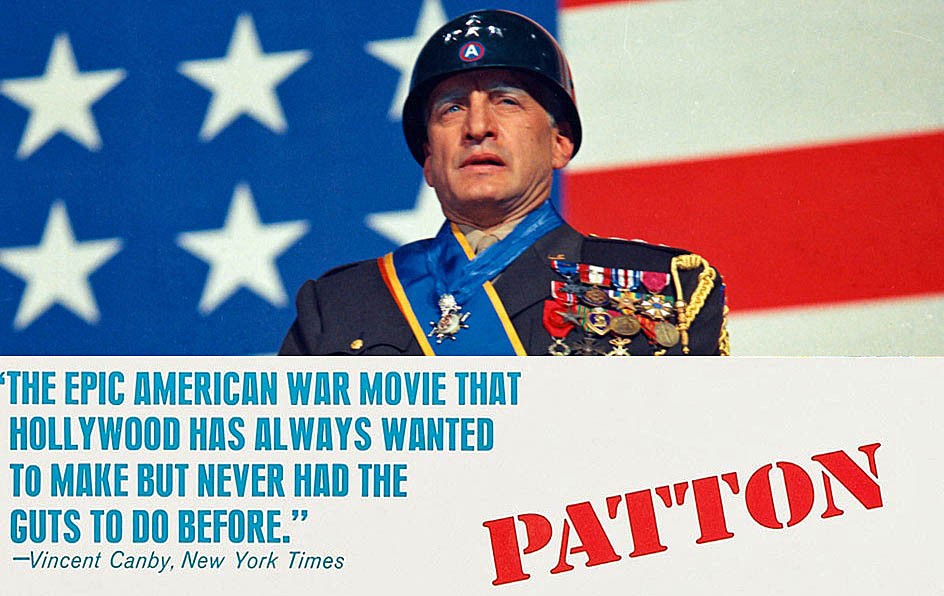
=====
During my Basic Training at Ft. Leonard Wood, I heard many references by drill sergeants to John Wayne: “John Wayne would 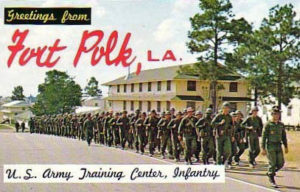 throw a grenade like this,” and “John Wayne would never do that.” During my next duty stop, at Ft. Polk, I discovered John Wayne war movies were shown daily, and free of charge, at the fort’s Tiger Land movie theater. WWII propaganda had segued into the Vietnam era.
throw a grenade like this,” and “John Wayne would never do that.” During my next duty stop, at Ft. Polk, I discovered John Wayne war movies were shown daily, and free of charge, at the fort’s Tiger Land movie theater. WWII propaganda had segued into the Vietnam era.
REAL GUNS/TOY GUNS
Outside of my time in the Army, the only rifle I had ever fired was during the late 1950s when my father loaned me a 4-10 and took me hunting for quail. Both times, I never shot anything. I really had no desire to do so. But being with Dad was special. It happened so rarely.
=====
 For decades, the only gun I have in the house is a Red Ryder BB Rifle of “you’ll shoot your eye out” fame. It remains unfired and BB-less since a friend gave it to me 20 years ago.
For decades, the only gun I have in the house is a Red Ryder BB Rifle of “you’ll shoot your eye out” fame. It remains unfired and BB-less since a friend gave it to me 20 years ago.
The spent-powder smell of a cap gun still lingers in my sensory memories, but that was then and this is now. The romanticism of being a cowboy remains a happy escape, and I still love the old flicks on DVD.
=====
Did I forget to mention my United States Army medal for M16 rifle qualifying? I am a Sharpshooter. Go figure.
=====
You should find this piece about toy guns interesting:
Recalling Frank Bresee, ‘The Golden Days of Radio’ & hours of audio entertainment
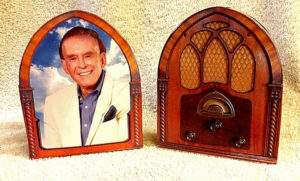 By Steve Crum
By Steve Crum
It was in 1971 when I met Frank Bresee. Then I met him again in 2003, 32 years later. The truth is, it was sort of a one-way meet in ’71. He didn’t know me then, but each and every week that year—and part of 1972, I visited him.
=====
Frank Bresee (1929-2018) was a show business historian who made his name via his The Golden Days of Radio, a weekly radio broadcast that was launched in 1949 and continued through syndication for over 40 years. It became radio’s longest running old-time radio show in entertainment history.
The half-hour program began with an announcer’s “Next…The Golden Days of Radio,” followed by the rousing, instrumental theme to “Manhattan Merry-Go-Round.” The show itself was fast paced, very light hearted, entertaining nostalgia hosted by Frank Bresee. Bresee would play either complete radio broadcasts or excerpts from any of the thousands of original radio transcription disks in his humongous collection. On any given episode, one 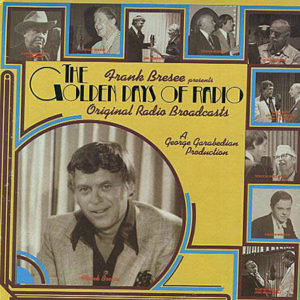 would hear the likes of Amos ’n’ Andy, The Lone Ranger, The War of the Worlds with Orson Welles, Bob Hope, Jack Benny, The Shadow, and on and on. Now and then, there would be a show dedicated to radio bloopers…or radio commercials…or famous radio announcers. There were special Christmas shows featuring holiday broadcasts from the 1930s-‘40s. Often, he would interview still living stars of radio (and sometimes movies) like Mae West, Edgar Bergen, Jim Jordan (aka Fibber McGee), and Fred Foy, who voiced The Lone Ranger’s opening spiel for decades.
would hear the likes of Amos ’n’ Andy, The Lone Ranger, The War of the Worlds with Orson Welles, Bob Hope, Jack Benny, The Shadow, and on and on. Now and then, there would be a show dedicated to radio bloopers…or radio commercials…or famous radio announcers. There were special Christmas shows featuring holiday broadcasts from the 1930s-‘40s. Often, he would interview still living stars of radio (and sometimes movies) like Mae West, Edgar Bergen, Jim Jordan (aka Fibber McGee), and Fred Foy, who voiced The Lone Ranger’s opening spiel for decades.
Throughout the program, Bresee’s distinctive voice perfectly blended with his obvious love and respect for whichever program was being spotlighted. And he made it fun and interesting in the process.
Incidentally, Bresee was not just a radio show collector and host. He had performed on radio in 1942 as the voice of Little Beaver on Red Ryder. He acted in other shows too, and became a technical adviser for various radio and TV shows. He even invented several board games, the most famous being Pass-Out, an adult drinking game that sold in the millions. It alone made Bresee a very wealthy man.
Frank Bresee’s passion for preserving and promoting vintage radio shows triggered my passion in enjoying and collecting similar material. That began when I first listened to The Golden Days of Radio when I was stationed at a U. S. Army post near Kaiserslautern, Germany from 1971-72.
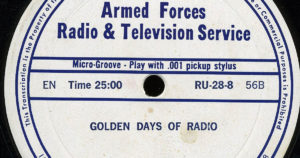 Homesick and alone while in my barracks most of the time, I listened to the Armed Forces Radio Service, a military-sponsored network broadcast outside the USA to our servicemen and women worldwide. Beginning in 1967, Bresee’s show was a must-hear weekly program on AFRS, continuing for the next 29 years. I not only loved the show, but increasingly thrived upon it. It offered terrific escape through ”Theatre of the Mind” entertainment.
Homesick and alone while in my barracks most of the time, I listened to the Armed Forces Radio Service, a military-sponsored network broadcast outside the USA to our servicemen and women worldwide. Beginning in 1967, Bresee’s show was a must-hear weekly program on AFRS, continuing for the next 29 years. I not only loved the show, but increasingly thrived upon it. It offered terrific escape through ”Theatre of the Mind” entertainment.
I copied the shows on cassette tapes, and I am glad I did. Within a few years, after I was discharged from the Army, I taught a unit on the history of radio in high school mass media classes for 20 years. Bresee’s passion had passed to me, and then on to hundreds of appreciative and informed students. The recordings were vital to my curriculum. Let me clarify that I did not play all of them for my classes. But what supplemental material!
Fast forward to 2003. I am home alone—and quite lonely, this time following a divorce. On a Friday night, I am in my basement, exploring the web on my iMac. Grabbing my attention is The Friday Night Show site on the USA Network that played old time radio shows, and hosted by…Frank Bresee! It is broadcast live, and Bresee keeps encouraging listeners to call in. In those days, long distance calls were expensive, but this was done via the computer, so we could chat through the embedded microphone and speakers, free of charge. (Bresee was broadcasting from Los Angeles.)
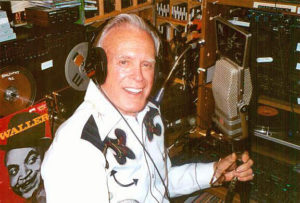 At that moment, karma meshed with deja vu. My memory shot back to my Army years—listening to radio—Golden Days of Radio—Bresee. I made the call, and Frank Bresee immediately picked up. Unreal. After introducing myself and telling him from where I was calling (Kansas City, Kansas), he told me he was impressed by my (to him) distant location. I spoke about listening to him in Germany, about taping his great shows and using them in high school teaching, and about how I could not believe this surreal moment of actually talking to him. While he kept trying to nail down what specific radio shows I used in my media classes, I kept yammering about what a positive impact he had on me. When he kept going back to talking about my curriculum, I kept repeating my “wow” comments. I was gushing effusively. It was shameful, but I could not control myself.
At that moment, karma meshed with deja vu. My memory shot back to my Army years—listening to radio—Golden Days of Radio—Bresee. I made the call, and Frank Bresee immediately picked up. Unreal. After introducing myself and telling him from where I was calling (Kansas City, Kansas), he told me he was impressed by my (to him) distant location. I spoke about listening to him in Germany, about taping his great shows and using them in high school teaching, and about how I could not believe this surreal moment of actually talking to him. While he kept trying to nail down what specific radio shows I used in my media classes, I kept yammering about what a positive impact he had on me. When he kept going back to talking about my curriculum, I kept repeating my “wow” comments. I was gushing effusively. It was shameful, but I could not control myself.
Bresee was very kind, and very patient. But he was forced to end my interview with the half-humorous comment, “I feel like you are delivering the eulogy at my funeral.” Then he thanked me, and the connection was over. I could not wait to hang up and pull myself together.
At least it is a certainty that Frank Bresee knew I greatly appreciated him. He impacted my teaching career as well as my passion for show business.
=====
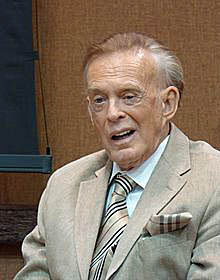 After his death last year, Bresee’s collection of radio scripts, props, related photos, and recordings of over 10,000 radio programs was donated to the Thousand Oaks Library Special Collection in Thousand Oaks, California.
After his death last year, Bresee’s collection of radio scripts, props, related photos, and recordings of over 10,000 radio programs was donated to the Thousand Oaks Library Special Collection in Thousand Oaks, California.
Thanks to Frank Bresee’s inspiration, I had accumulated a hefty collection of radio shows myself—about 1,400 hours on reel-to-reel tapes. Several years ago, after retiring from teaching, I donated all of them to The University of Kansas. Paying it forward time.
=====
For a terrific biographical film about Frank Bresee, check out this site:
